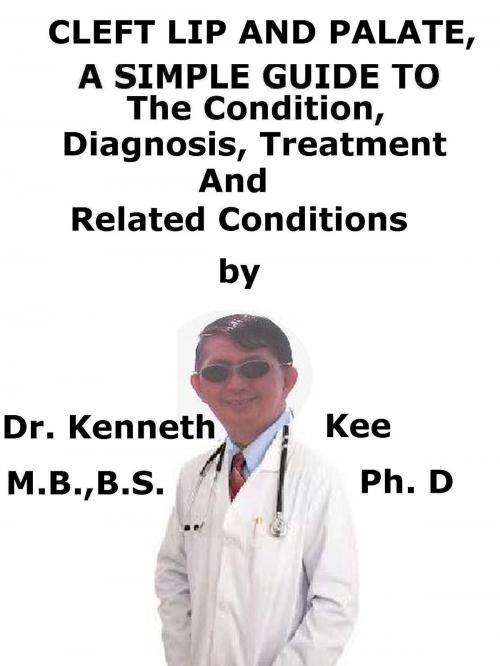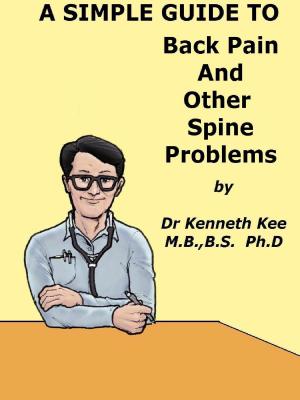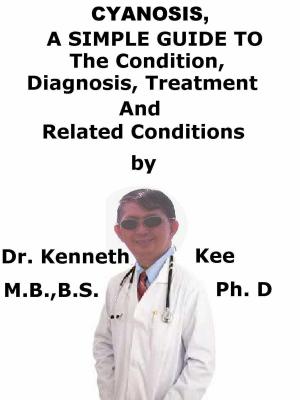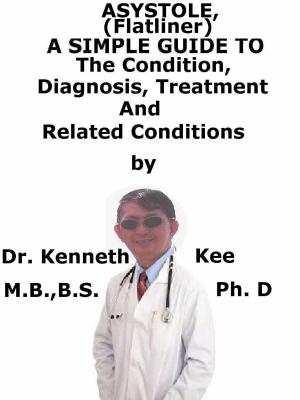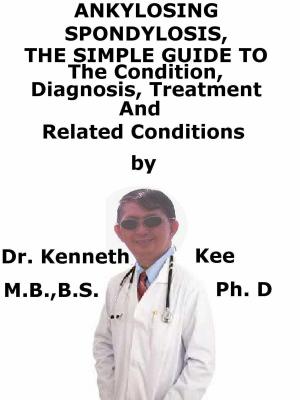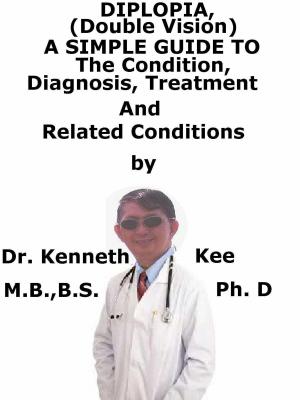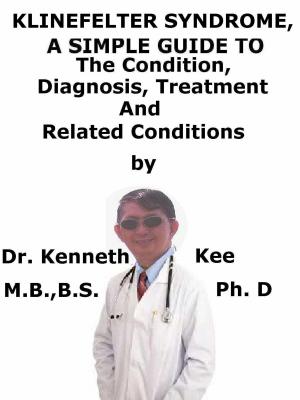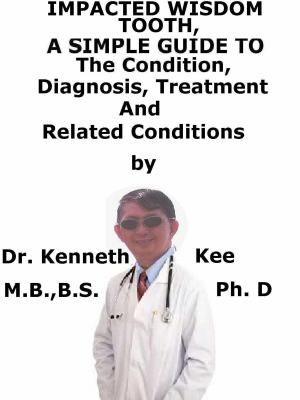Cleft Lip And Palate, A Simple Guide To The Condition, Diagnosis, Treatment And Related Conditions
Nonfiction, Health & Well Being, Health, Ailments & Diseases, Oral Health, Medical, Specialties, Otorhinolaryngology| Author: | Kenneth Kee | ISBN: | 9781370922024 |
| Publisher: | Kenneth Kee | Publication: | October 12, 2017 |
| Imprint: | Smashwords Edition | Language: | English |
| Author: | Kenneth Kee |
| ISBN: | 9781370922024 |
| Publisher: | Kenneth Kee |
| Publication: | October 12, 2017 |
| Imprint: | Smashwords Edition |
| Language: | English |
Cleft lip and palate (CLP) are frequent birth defects that involve the upper lip and the roof of the mouth.
In spite of the fact that it is an isolated birth defect on its own, it is also linked with other syndromes or genetic conditions that are inherited.
Cleft lip and cleft palate (CLP) or orofacial clefts are cracks or openings on the mouth's roof or the upper lip or both mouths' roof and upper lip.
Failure of the facial structures to fully form totally in unborn babies gives rise to cleft lip and cleft palate (CLP) or orofacial clefts.
An opening or a break on the mouth's roof is called a cleft palate.
The mouths roof at the front which is hard (the hard palate) or the soft portion at the mouth's roof (the soft palate) may be affected with the cleft palate.
Cleft lip and palate (CLP) is a comparatively frequent, non-life-threatening abnormality which can have substantial effect on maternal bonding
Causes:
In the course of formation in the womb, the structures producing the upper palate or lip do not succeed to come together properly and it provides rise to a cleft palate or lip.
The cause is not known in most cases, but it is seen to be the combination of environmental (external) and genetic (internal) factors.
The lip has normally formed by 5-6 weeks of intrauterine life.
The palate has formed by 10 weeks.
The cleft may be seen by high-resolution ultrasound at 20 weeks of gestation.
Diagnosis is normally made after delivery.
There are many reasons causing cleft lip and palate.
The disorders with genes passed down from 1 or both parents, drugs, viruses, or other toxins can all produce these birth defects.
Cleft lip and palate may happen along with other syndromes or birth defects.
A cleft lip and palate can:
1. Affect the appearance of the face
2. Result in problems with feeding and speech
3. Result in ear infections
Genetic factors
Babies tend more likely to be born with a cleft lip and palate if they have a family history of these disorders or other birth defects.
If both parents are not affected, but have one child with a cleft, the chance of the second child being similarly affected is 2-8%.
If one or other parent has a cleft, the danger of a cleft in a child is 4-6% with each pregnancy.
Environmental factors
There is an identified risk in taking certain forms of drugs during pregnancy (e.g., phenytoin, isotretinoin, sodium valproate, benzodiazepines and corticosteroids).
Maternal smoking and alcohol drinking has a higher risk
Symptoms
Cleft lip alone
If the cleft involves the lip only and does not involve the palate is called the cleft lip.
There may be a small gap in the lip (entire cleft) with the split going from the lip to the nostril.
Cleft lip may be unilateral or bilateral.
Cleft palate (with or without cleft lip)
Cleft palate disorder happens when the two plates in the base of the skull which form the hard palate do not succeed to fuse
A total cleft palate affects both hard and soft palates.
Diagnosis
A physical examination of the mouth, nose, and palate diagnoses a cleft lip or cleft palate.
Cleft lip and cleft palate (CLCP) or orofacial clefts are more often seen on ultrasound while the baby has not been born
Treatment
Surgical treatment
This consists of the major part of the treatment.
A number of surgeries will be needed as the child grows.
Primary lip closure is done at three months after birth
Palate closure is done at 6-12 months
If there is a hole in the gums, a bone graft may be needed.
Recent advances in fetal surgery using a fetal endoscopic method, provide the prospect of scar-less wound healing, and bone healing without callus formation.
This permits for better or even normal maxillary growth
TABLE OF CONTENT
Introduction
Chapter 1 Cleft Lip and Palate
Chapter 2 Causes
Chapter 3 Symptoms
Chapter 4 Diagnosis
Chapter 5 Treatment
Chapter 6 Prognosis
Chapter 7 Breast Feeding
Chapter 8 Hearing Loss
Epilogue
Cleft lip and palate (CLP) are frequent birth defects that involve the upper lip and the roof of the mouth.
In spite of the fact that it is an isolated birth defect on its own, it is also linked with other syndromes or genetic conditions that are inherited.
Cleft lip and cleft palate (CLP) or orofacial clefts are cracks or openings on the mouth's roof or the upper lip or both mouths' roof and upper lip.
Failure of the facial structures to fully form totally in unborn babies gives rise to cleft lip and cleft palate (CLP) or orofacial clefts.
An opening or a break on the mouth's roof is called a cleft palate.
The mouths roof at the front which is hard (the hard palate) or the soft portion at the mouth's roof (the soft palate) may be affected with the cleft palate.
Cleft lip and palate (CLP) is a comparatively frequent, non-life-threatening abnormality which can have substantial effect on maternal bonding
Causes:
In the course of formation in the womb, the structures producing the upper palate or lip do not succeed to come together properly and it provides rise to a cleft palate or lip.
The cause is not known in most cases, but it is seen to be the combination of environmental (external) and genetic (internal) factors.
The lip has normally formed by 5-6 weeks of intrauterine life.
The palate has formed by 10 weeks.
The cleft may be seen by high-resolution ultrasound at 20 weeks of gestation.
Diagnosis is normally made after delivery.
There are many reasons causing cleft lip and palate.
The disorders with genes passed down from 1 or both parents, drugs, viruses, or other toxins can all produce these birth defects.
Cleft lip and palate may happen along with other syndromes or birth defects.
A cleft lip and palate can:
1. Affect the appearance of the face
2. Result in problems with feeding and speech
3. Result in ear infections
Genetic factors
Babies tend more likely to be born with a cleft lip and palate if they have a family history of these disorders or other birth defects.
If both parents are not affected, but have one child with a cleft, the chance of the second child being similarly affected is 2-8%.
If one or other parent has a cleft, the danger of a cleft in a child is 4-6% with each pregnancy.
Environmental factors
There is an identified risk in taking certain forms of drugs during pregnancy (e.g., phenytoin, isotretinoin, sodium valproate, benzodiazepines and corticosteroids).
Maternal smoking and alcohol drinking has a higher risk
Symptoms
Cleft lip alone
If the cleft involves the lip only and does not involve the palate is called the cleft lip.
There may be a small gap in the lip (entire cleft) with the split going from the lip to the nostril.
Cleft lip may be unilateral or bilateral.
Cleft palate (with or without cleft lip)
Cleft palate disorder happens when the two plates in the base of the skull which form the hard palate do not succeed to fuse
A total cleft palate affects both hard and soft palates.
Diagnosis
A physical examination of the mouth, nose, and palate diagnoses a cleft lip or cleft palate.
Cleft lip and cleft palate (CLCP) or orofacial clefts are more often seen on ultrasound while the baby has not been born
Treatment
Surgical treatment
This consists of the major part of the treatment.
A number of surgeries will be needed as the child grows.
Primary lip closure is done at three months after birth
Palate closure is done at 6-12 months
If there is a hole in the gums, a bone graft may be needed.
Recent advances in fetal surgery using a fetal endoscopic method, provide the prospect of scar-less wound healing, and bone healing without callus formation.
This permits for better or even normal maxillary growth
TABLE OF CONTENT
Introduction
Chapter 1 Cleft Lip and Palate
Chapter 2 Causes
Chapter 3 Symptoms
Chapter 4 Diagnosis
Chapter 5 Treatment
Chapter 6 Prognosis
Chapter 7 Breast Feeding
Chapter 8 Hearing Loss
Epilogue
